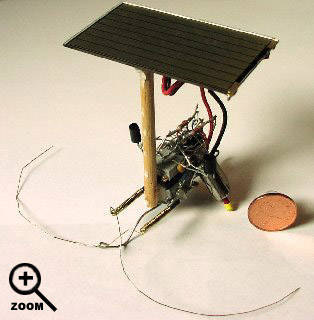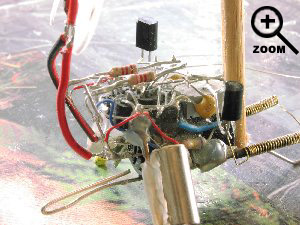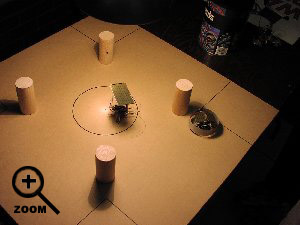
Mike's

|
Where to?
Canada
 Kicks Ass! This site is hosted by
Solarbotics.net
|
Tiny Giraffe
(Photopopper Photovore)
Click to enlarge pictures with zoom
symbol.
This was my very first photovore
project, as well as my first freeforming attempt. Thanks to the beautiful
tutorial created by Chiu, it was a successful first attempt.
It uses the standard photopopper circuit, which is basically 2
solarengines hooked together but sharing a common capacitor and solar cell. See schematic
below.
You'll also notice that the solarcell is on a sort of
"neck" to elevate it. (Hence the name "giraffe!") This is to decrease the
distance between the light source (a desklamp centred overtop of the
"arena") and the solarcell, therby increasing solarcell voltage and
current output.
According to the competition rulebook, which you can find
at the Western Canadian Robot Games (WCRG) website, competitors must fit within a 6 inch
cube. I debated whether I should raise the solarcell right up to the maximum
height, but I eventually decided against it. Why? Because the only light
source for the competition is a desk lamp bent so that the bulb is over
the centre of the board at a give height, the farther out and higher you
get the dimmer the light. So really, the height of
the solarcell is a tradeoff between performance at the outset and performance once the
robot gets under the light. (You really have to understand the competition
procedures to comprehend this; the picture of this bot in competition below should help
a bit.) In addition to the elevation of the solarcell, it is also tilted about
10 degrees forward to help capture light at the start of the competition. It's
important to remember one critical rule of the contest: The first robot
to the centre gets a half point, while the one closest
to the centre at the end gets a full point. Therefore,
speed is a key factor in winning.
| Circuit: | Photopopper Photovore |
| Sensors: | 2 Spring tactile, 2 IR photodiodes |
| Solarcell: | Panasonic Suncarem 37x66 5.5v |
| Motors: |
Solarbotics Namiki Page Motors |
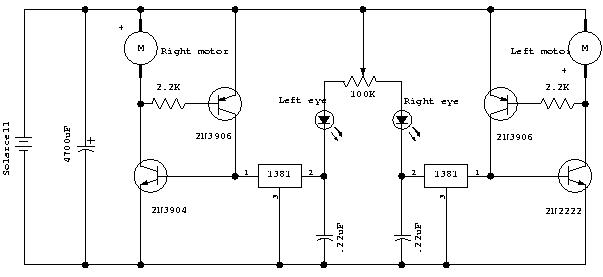
Pictures
Click to enlarge(Be warned, most are 200kb or so when enlarged!)
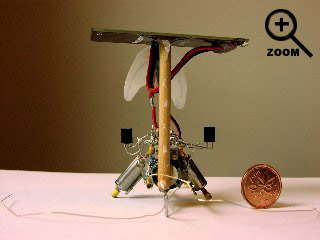 |
 |
|
Front |
Back |
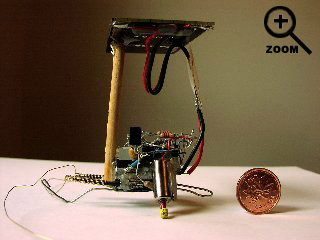 |
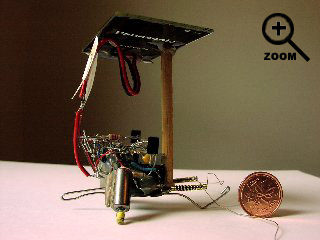 |
|
Left |
Right |
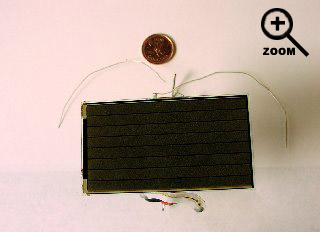 |
 |
|
Top |
Bottom |
|
| |
|
Guts Closeup |
At WCRG 2002 vs Mosher |
Awards for this Robot
| 2000 WCRG: | 3rd Place |
| 2001 WCRG: | 1st Place |
| 2002 WCRG: | 1st Place |
